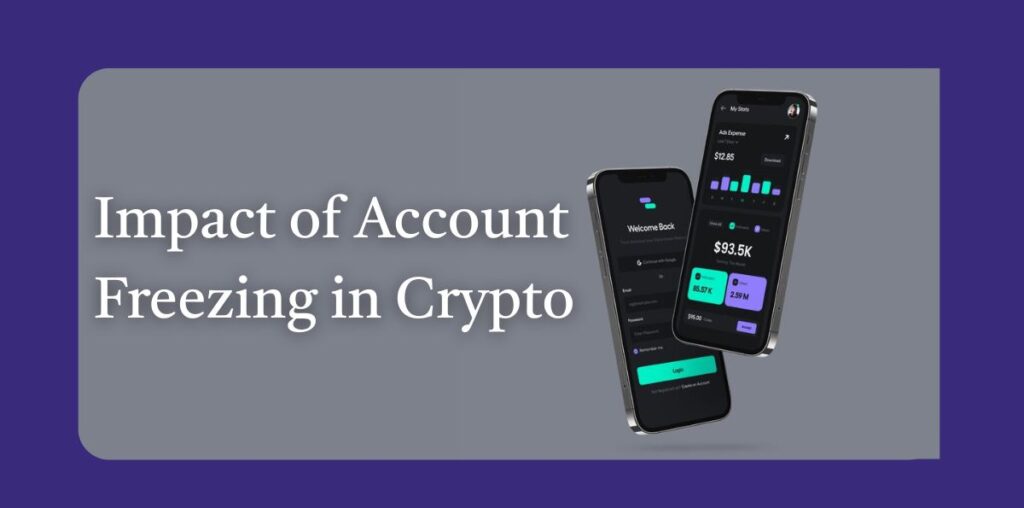The decentralized nature of cryptocurrency gives users greater control over their assets—but when you’re using centralized exchanges or platforms, your account may still be subject to certain restrictions. One of the most frustrating of these is account freezing.
Whether due to security concerns, compliance checks, or suspicious activity, a frozen crypto account can be an unexpected hurdle that limits your access to funds. Understanding why this happens and how to respond can help reduce stress and protect your investments.
What Does It Mean When a Crypto Account Is Frozen?
When a crypto account is frozen, it means the platform (typically an exchange or wallet service provider) has temporarily restricted your access to perform certain actions, such as withdrawals, trades, or even logins. You may still see your balance, but you won’t be able to use your assets until the freeze is lifted.
This can occur for several reasons:
-
Unusual or suspicious account activity
-
Ongoing security investigations
-
Regulatory compliance issues (e.g., KYC/AML checks)
-
Chargebacks or reversed payments
-
Reports of fraud or hacking attempts
Account freezes are typically implemented to protect both the user and the platform while an investigation or verification process is underway.
Common Reasons Crypto Accounts Get Frozen
Understanding what causes account freezes can help you avoid them. Here are some of the most frequent triggers:
1. Violating Platform Policies
Failing to follow terms of service—such as engaging in prohibited trading practices or using unverified accounts—can result in account suspension or freezing.
2. Incomplete KYC Verification
Most centralized exchanges require Know Your Customer (KYC) verification. If your information is missing, outdated, or flagged, it could lead to a freeze until the issue is resolved.
3. Suspicious Transactions
Large or irregular transactions may raise red flags. For instance, sudden movements of large amounts of crypto or sending funds to addresses linked to suspicious activity can prompt an automatic freeze.
4. Security Breaches
If the platform suspects your account may have been compromised, it might freeze access to prevent unauthorized withdrawals.
How to Respond to a Frozen Crypto Account
If you discover that your account has been frozen, don’t panic. Instead, follow these practical steps:
1. Contact Customer Support
Start by reaching out to the platform’s official support team. Avoid third-party sources or social media links promising fast solutions. If you’re unsure how to begin the recovery process, check their help section for FAQs.
For example, some users facing account issues may need help understanding how to unlock crypto.com account, which involves completing identity verification steps and possibly providing documentation.
2. Submit Necessary Documents
If the freeze is due to KYC issues, prepare to upload government-issued ID, proof of residence, or other requested documents. Prompt submission can help expedite resolution.
3. Avoid Creating Multiple Tickets
Submitting multiple requests can slow down the process. Stick with one support ticket, and be patient while awaiting a response.
4. Be Cautious of Scammers
During vulnerable times, scammers often pose as support agents. Always verify the crypto.com support number or use live chat through official platforms. Never share your private keys or seed phrases.
Implications of a Frozen Account
The biggest concern with a frozen account is the loss of access to your funds during periods of volatility. You may miss trading opportunities or be unable to respond to market events. There’s also the risk of delays in resolving the issue, especially during high-support volume periods.
While freezes are inconvenient, they are typically temporary and intended to protect your assets from potential fraud or unauthorized access.
How to Prevent Account Freezing
To minimize the risk of having your crypto account frozen, follow these best practices:
-
Complete KYC early: Don’t wait for an issue to arise—verify your account as soon as possible.
-
Use strong security: Enable two-factor authentication, use strong passwords, and avoid sharing account details.
-
Avoid suspicious transactions: Only send crypto to verified addresses and avoid using mixers or other anonymity tools that could raise red flags.
-
Follow platform rules: Each platform has different usage policies—read and follow them carefully.
Conclusion
Account freezing is a protective measure that can be frustrating, but it’s often triggered by security protocols or regulatory requirements. By understanding the reasons behind it and knowing how to respond, you can take swift action and regain access to your assets.
Being proactive—by keeping your account verified, using secure practices, and staying within platform guidelines—can help you avoid most freeze scenarios. And if you ever do find your account frozen, staying calm and communicating clearly with support is the fastest way back in.



